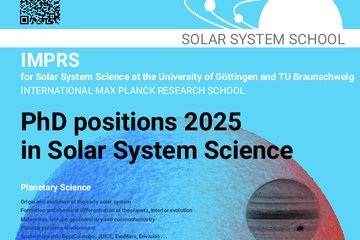
Solar Lower Atmosphere and Magnetism
Magnetic activity of the Sun plays a dominant role in virtually all processes in the solar atmosphere. It causes the 22-year solar activity cycle and the concomitant variability of the solar luminosity and it produces most of the sometimes spectacular visible phenomena, like sunspots, prominences, flares and coronal mass ejections. To understand these processes high-precision measurements of the physical conditions in the photosphere and the lower atmospheric layers if the Sun are essential.

Sunspot observed with the spectropolarimeter onboard the Hinode space-based solar observatory. The analysis methods developed in the SLAM group significantly enhance the information retrieved from the image (right).
The research group “Solar Lower Atmosphere and Magnetism” (SLAM) analyzes the solar spectrum using instrumentation at the largest solar telescopes available worldwide. The determination of solar magnetic fields is intimately linked to the measurement and the interpretation of spectra in polarized light. In the presence of a magnetic field light becomes polarized through the Zeeman effect. Spectropolarimetry aims at the wavelength dependent measurement of the polarization degree and orientation of the light emitted by the Sun. The analysis of these measurements involves numerical modelling of the radiative transfer equation and sophisticated image reconstruction techniques. The development of software for these purposes represents a further focus of the SLAM research group.
Results from magneto-hydrodynamic simulations show that the processes relevant for the understanding of the energy balance in the solar atmosphere occur on smallest spatial and temporal scales, requiring telescopes with large apertures and highly sensitive spectro-polarimetric instrumentation. The development of such instruments and the involvement in operating solar observatories represent another main pillar of the SLAM activities.

Beamsplitter cubes at the Gregor telescope on Tenerife distribute the sunlight to the wave front sensor of the adaptive optic system (KAOS, green channel), to the infrared spectropolarimeter (GRIS, red channel) and to the GREGOR Fabry-Pérot Interferometer (GFPI, white-light channel).













